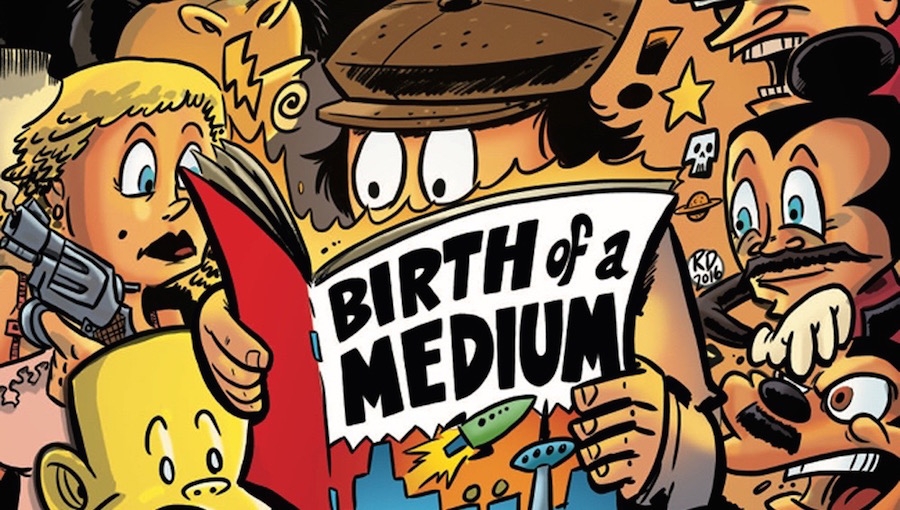Fred Van Lente, Ryan Dunlavey, and Adam Guzowski’s The Comic Book History of Comics: Birth of a Medium is a treatise on the place of comics as an important part of the fabric of American popular culture. Readers who are familiar with American history and culture may catch that Birth of a Medium is a citation of D. W Griffith’s early American film, Birth of a Nation, but non-American readers (like me!) may not get the reference and may be surprised at the American-centric nature of this text. Though I do think that readers will want to be aware that Birth of a Medium doesn’t offer a comprehensive account of the rise of comics as a medium globally, I count the extreme focus of the text as a positive; Lente and Dunlavey are excellent historians of American comics, and they’ve produced a detailed and relatively balanced text on that topic.
The Comic Book History of Comics is structurally sound, with excellent pacing, and is clear and easy to follow in terms of both narrative and organization of content. Lente and Duvlavey open by placing comics in line with more broadly recognized, ancient forms of word-and-picture communication (like hieroglyphs!), move to discuss early newspaper and pamphlet-based comics, and then move to trace major innovations in form and genre in American comics beginning with Richard F. Outcault’s The Yellow Kid and proceeding chronologically up to Robert Crumb and his influence on indie comics in the 1960s and 1970s. At each step in comics development, Lente and Dunlavey offer a good amount of detail about major creators in the field, as well as strong links to larger cultural shifts; one of the most interesting through-lines in the text is the intimate link between comics creators (including big names like Will Eisner and Jack Kirby) and wartime print materials such as instruction manuals, pamphlets, and even “nose art” on warplanes and ships.
In the later, genre-focused section of the book, Lente and Dunlavey vary their style, including character design, to mirror each respective genre that they discuss. This stylistic shift between genre characteristics amounts to a fun and quirky way to demonstrate changes in both comics production and comics-reader appetites over time. Additionally, though the visual style changes in this way, the narrative voice remains steady, which aids in ease of reading and ensures that stylistic changes aren’t jarring or confusing for the reader. This particular mode shows Lente and Dunlavey’s biggest strength: their ability to move seamlessly between fairly disparate styles, but also their firm grasp of how each element of the comics form can be harnessed in service of a larger, in this case pedagogical project.
Two kinds of inset pages flesh out the larger narrative: one that focuses on comics form innovations, and one that focuses on women’s contributions to comics. The latter are a new and welcome feature of this edition, and both provide good insight into their respective topics without interrupting the larger narrative flow. In future editions, perhaps the authors will include further threads in their account of comics in America; I’d like to learn more about the African-American comics artists, writers, and inkers who’ve been part of the process since the Golden-Age, for example. Overall, however, The Comic Book History of Comics is an excellent, accessible, and informative text. I recommend this book to anyone who wants to learn more about the history of American comics, with the one caution that parents will want to give it a read-through before handing it over to their kids.

